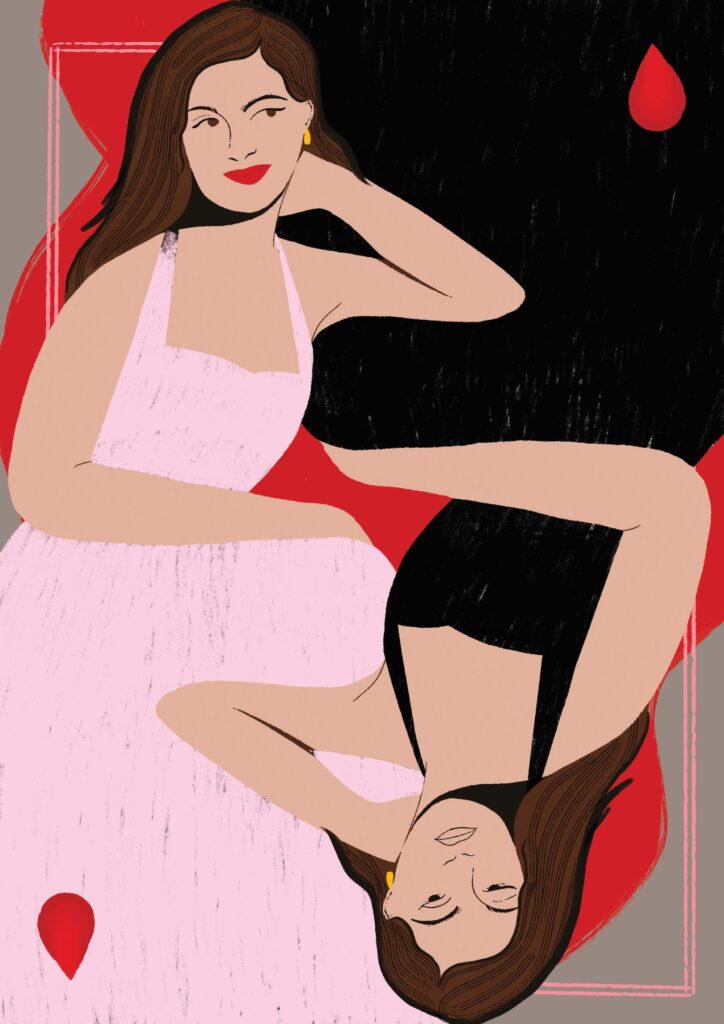Many of us experience unpleasant symptoms before our periods start but it’s important to recognise when there’s a deeper issue at play
We’ve all been there. One minute we’re flying high – feeling great, looking good, loving everyone we meet and sending positive vibes in all directions.
The next, we’re inexplicably emotional, on edge, paranoid that people are talking about us, convinced that our friends hate us, can’t stand the sight of ourselves in a mirror, one wrong look away from a divorce and only want to eat chocolate and bread.
And then our period starts and it all makes sense. The relief, right? Well, not exactly.
While a certain amount of emotional upheaval is to be expected, if your symptoms are debilitating, it’s time to re-examine your hormonal fluctuations, because you may have PMDD.
Symptoms of PMDD
In the current issue of Irish Country Magazine, Niamh Devereux writes for our health series The Invisible Struggle that: “Premenstrual Dysphoric Disorder (PMDD) is an extremely overlooked and poorly understood condition, often confused for PMS (premenstrual syndrome).”
However, the symptoms are much more severe and include:
- Intense mood swings
- Feelings of worthlessness
- Depression
- Suicidal thoughts
- Anger and conflict with other people
- Sleep issues
- Bloating
- Headaches
It has been described as ‘an abnormal response to normal hormonal changes.’ It can last up to two weeks every month, causing many young adults to feel like they are constantly making up for the time they experience PMDD and undo any damage caused in their personal and professional lives.

Understanding PMDD
Dr Shubhangi Karmakar (they/them) is a multiple award-winning doctor, life coach and legal trainee, passionate about shaping policies on PMDD, having lived with the symptoms since their teens. They spoke to Niamh in the July|August issue to shed more light on the condition.
They explain that in order to have your condition recognised as PMDD at the moment, things have be to so bad that you can prove a ‘severe disruption to your functioning.’ Alarmingly, for many people, their problems often become so overwhelming that there’s a higher chance of them attempting or committing suicide.
Dr Shubhangi says: “In that sphere, the harms are non-negligible, and the possibility of intervention can be targeted and so beneficial, that it’s a real shame it’s not more understood or spoken about more as something people need more support for.”
Treating PMDD
There are many suggestions for treating this condition including lifestyle and diet changes, therapy or even certain medications, depending on your symptoms. It’s important to remember that every person’s experience of PMDD is complex and individual and there is no “one-size-fits-all” cure.
Dr Shubhangi advises downloading the printable tracker on iapmd.org/symptom-tracker, which is essentially a scoring system in-line with the diagnostic criteria for PMDD: the physical symptoms, the psychological symptoms and the functioning impact.
“I would say to get familiar tracking these symptoms, and keeping track for two-three months to see any patterns before going to a clinician. I know it sounds like a lot of work, but it pays off.”
You can read the full interview with Dr Shubhangi – from knowing your rights in employment to future plans for bettering Irish healthcare for those suffering with PMDD – for The Invisible Struggle series in the current edition of Irish Country Magazine, on sale now.








